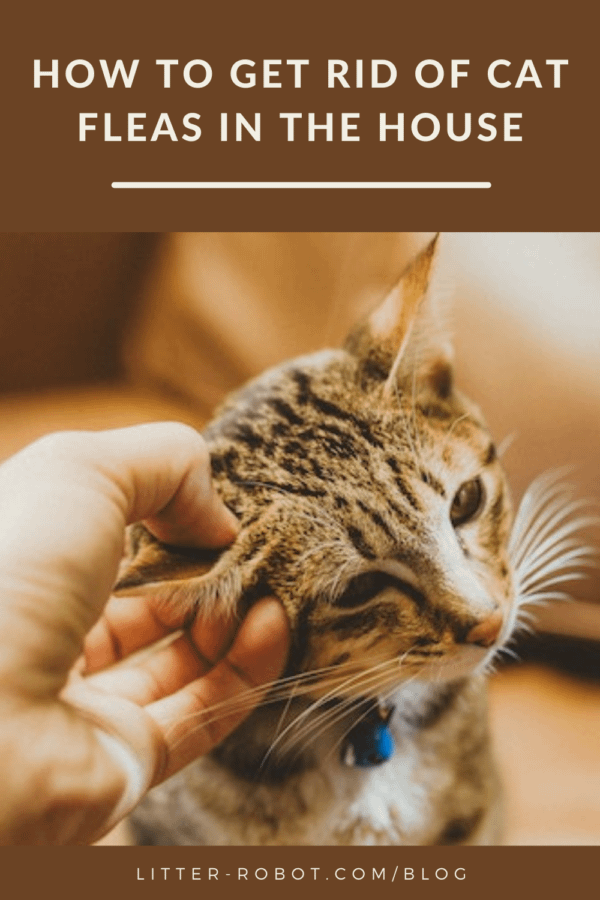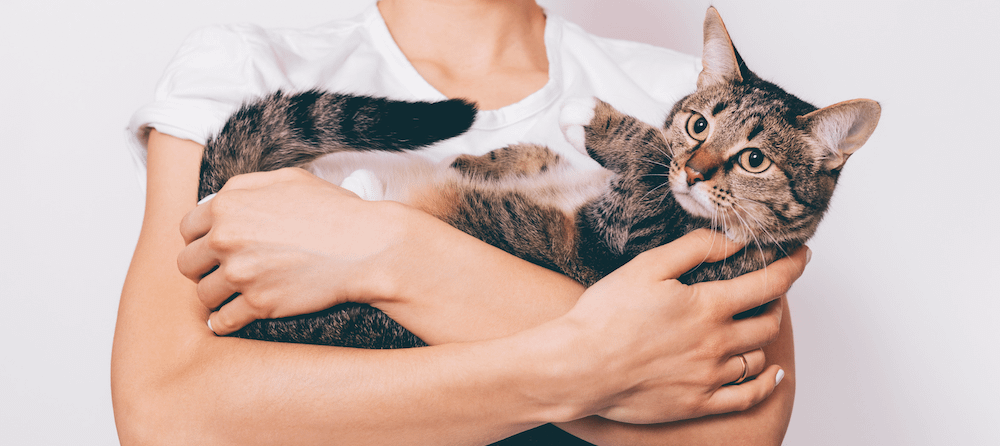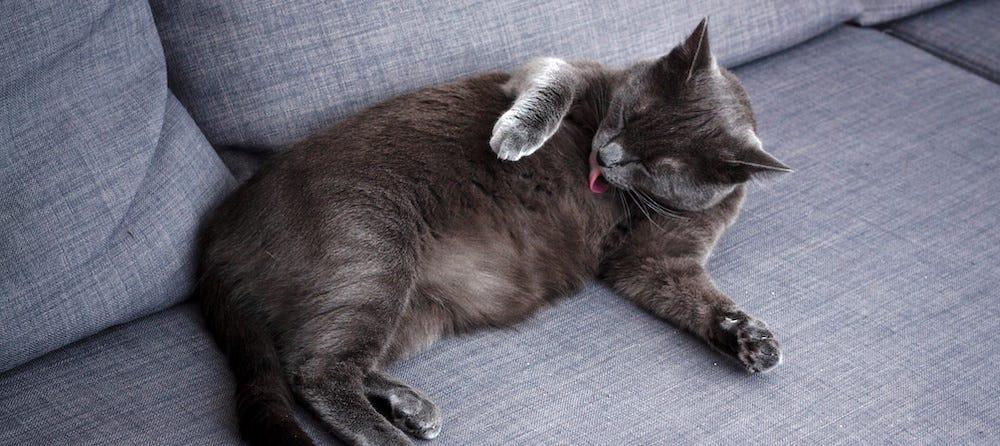Any cat parent who has had to deal with fleas will agree that fleas are some of the most annoying pests. These tiny bugs move around with ease, and they can find their way into nearly any part of your home.
If your cat is currently experiencing a flea problem, you’ll want to nip it in the bud as soon as possible in order to minimize their spread around the house. It’s important to know that when your cat has fleas, you’ll need to treat both your cat and your home in order to eliminate the problem.
We’re going to cover all of the bases in this article. Learn about what fleas are and how long they can last in your home. Get tips on how to get rid of cat fleas in the house fast and effectively. Most importantly, we’ll also tell you how to keep fleas from returning! Here’s what you need to know.
What cat fleas look like
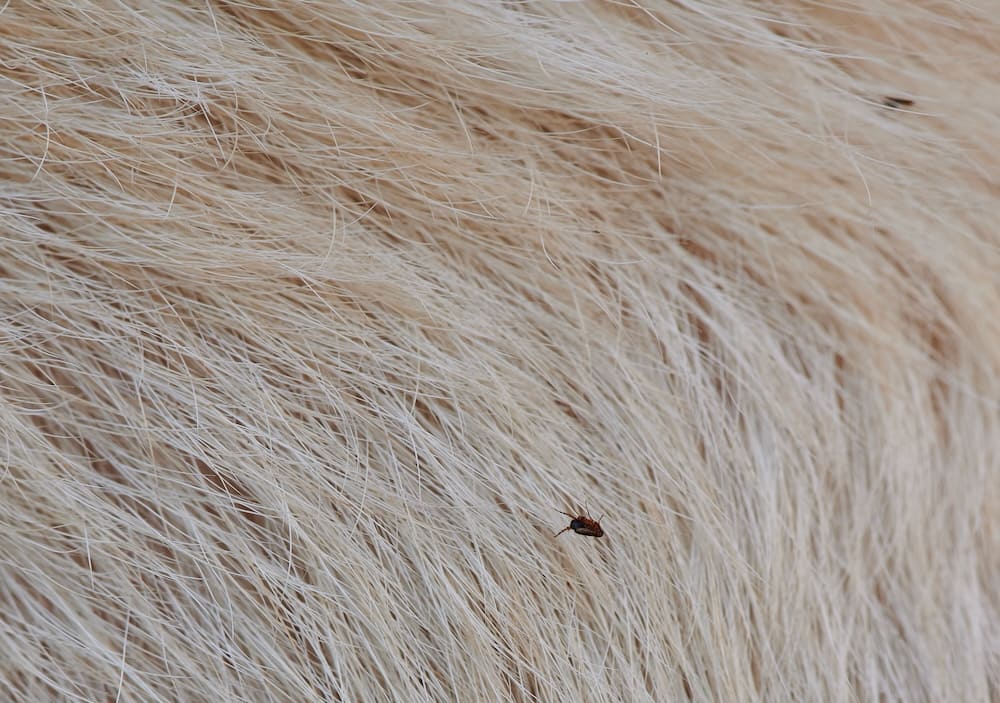
Cat fleas are one of the most common forms of parasites. Fleas are tiny wingless insects that cause discomfort to your cat by biting them to take a blood meal. In doing so, fleas can transmit several diseases through their saliva. They love to feed on the blood of warm-bodied animals.
Cats that spend time outdoors are more likely to encounter fleas than indoor cats, but fleas are not limited to outdoor cats.
What color are cat fleas?
Cat fleas are typically dark brown to black in color. The color may vary depending on the age and feeding status of the flea. Newly hatched fleas are often lighter in color and may appear more reddish-brown.
How to tell if a cat has fleas
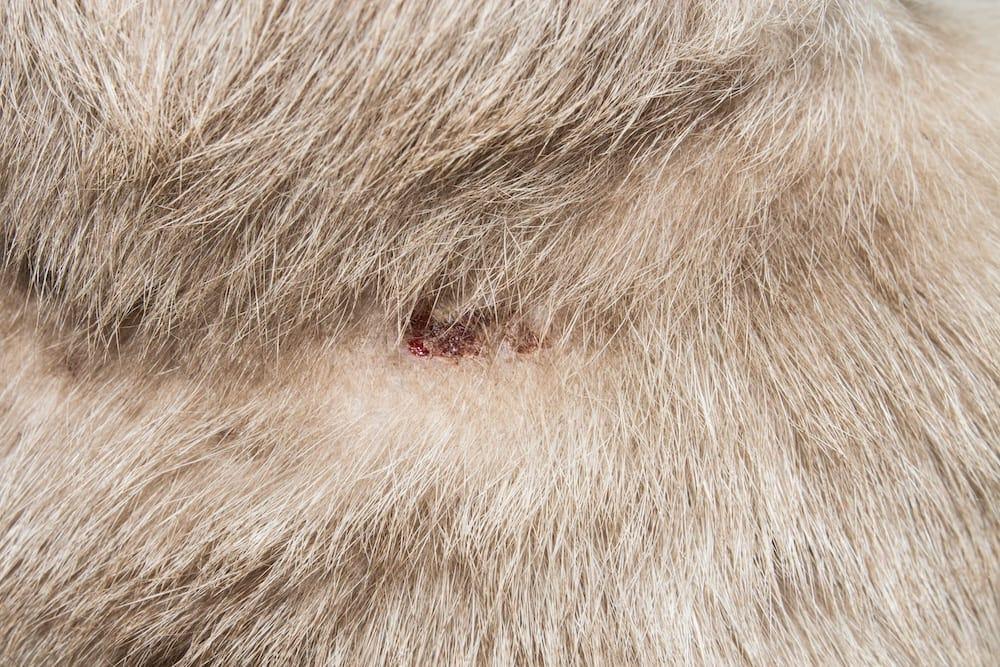
Not every scratch means that your cat has fleas. So how do you know if you cat has fleas? Here are some signs to watch out for:
- Excessive scratching. If you notice your cat scratching more than usual, it could be a sign of fleas. You might even notice redness, irritation, or even some bleeding.
- Flea dirt. Check your cat's fur, especially around the neck and base of the tail, for small, fast-moving insects. Flea dirt (feces) resembles tiny black specks and may be present on the fur. To distinguish flea dirt from regular dirt, place some on a white paper towel and wet it – flea dirt will turn reddish-brown, as it contains digested blood.
- Restlessness. Cat fleas cause a lot of discomfort. Your cat may exhibit restlessness or increased irritability.
- Excessive grooming. Cats may groom excessively in an attempt to alleviate the discomfort caused by fleas. Pay attention to changes in grooming behavior.
How does an indoor cat get fleas?
Even indoor-only cats can come in contact with these tiny pests if you or another animal brings them inside by accident. Fleas live on all kinds of wildlife trudging through your yard: squirrels, rabbits, mice, and raccoons, to name a few. Those fleas can jump ship to you or your dog in mere moments. Cat fleas do not normally live on humans, but do bite people who handle infested animals.
That’s why vets recommend keeping your indoor cat on flea and tick medication—particularly topical, prescription-strength veterinary products. Just be sure you never use flea and tick medication meant for a dog on a cat; many of these dog medications typically contain high-concentration pyrethrins or pyrethroids, which are safe for dogs but very poisonous to cats and would warrant immediate emergent care.
While there are topical shampoo and powder options to treat your feline friend, they tend to have short-term effects and typically warrant repeated treatments.
If a cat has fleas will they be in the house?
Yes! If your cat has fleas, there is a high chance that they will also be present in the house.
Adult fleas will live on your cat and feed on its blood but also lay eggs on the cat's fur which then fall into your home. This is especially likely on carpets, bedding, and any place your cat likes to go to. Flea eggs will then hatch, mature, and jump onto your cat, completing the life cycle.
Because flea eggs, larvae, and pupae are present in the environment, it's crucial to treat both the cat and the surrounding areas to effectively control and prevent flea infestations.
How long do cat fleas live in the home?
The life of a flea depends mainly on two things: the climate the flea is in and whether or not the flea has a host. Fleas flourish in warm climates with temperatures around 80 to 90℉ and 70 percent humidity. They also live longer with a host, which can be your cat or other animals in the home.
When these conditions are met, you can expect fleas to have a life cycle of anywhere from 8 to 21 days. Fleas tend to live longer on longer-haired cats or animals as opposed to shorter-haired cats. Keep in mind that once female parasites feed, they will start laying their eggs like clockwork. And the more adult fleas in your home, the bigger the problem due to how quickly fleas spread.
Dark, damp areas near cat beds and cat trees are going to be optimal hiding places for fleas. Flea larvae are usually found under furniture and in pet bedding.
Can fleas live in litter boxes?
Although adult fleas would much prefer a living host, it is possible for them to live for several days in unexpected areas of your home such as the litter box. Flea eggs, meanwhile, can also survive the 1 to 10 days it takes for them to hatch in the humid environment of cat litter.
How to get rid of fleas in your house fast!
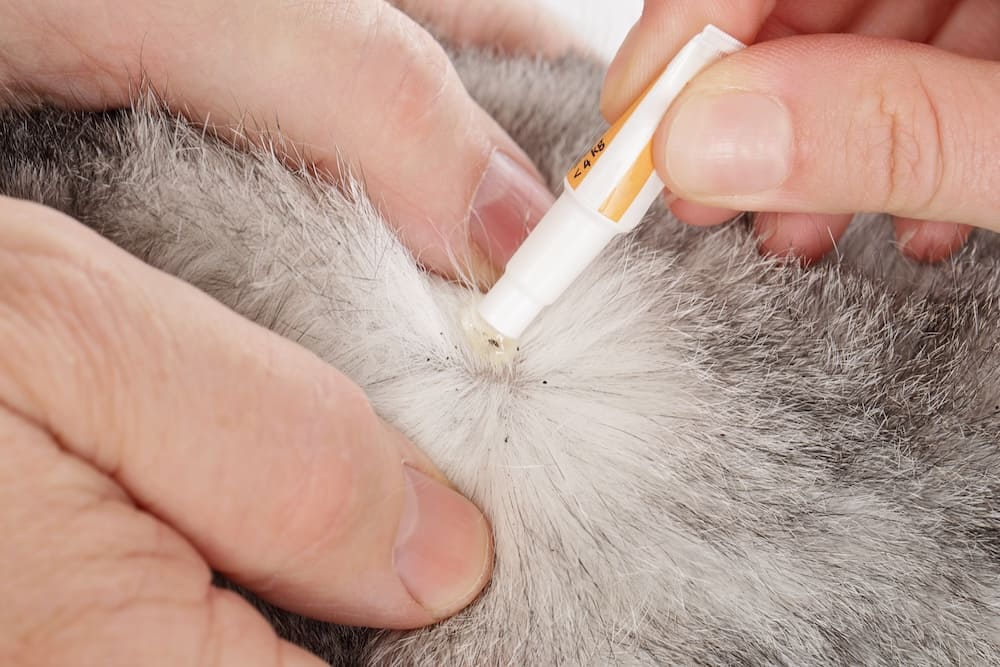
My cat has fleas, how do I clean my house? Once you identify a problem, you’ll want to work on getting rid of fleas fast so your living space doesn’t become a flea nursery. The majority of flea infestations are thought to be eggs, rather than adults. You’re going to need to treat your cat as well as your home to truly eradicate the infestation. Here's what to do if your cat has fleas and how to get rid of fleas from your home fast!
1. Treat your cat against fleas
The first step to treating your house for fleas is to treat your cat. Even if you get rid of all the fleas in your house, if your cat still has fleas they will continue to invade your home and lay new eggs. Here's how to get rid of fleas on cats fast:
- Use flea medication. A topical, prescription-strength veterinary product is most recommended. In some cases, oral medications, flea collars, or medicated flea shampoo may be used. Talk to your vet first.
- Start flea prevention. Consider using flea preventive measures such as regular flea treatment, especially if you have multiple pets.
2. Use a powerful vacuum
You’ll want to vacuum all of your floors, clean your upholstery, and treat your mattresses daily. Be sure to pay attention to every inch of your furniture, even up to the baseboard, as well as under couches and tables. Fleas like to hide out in cracks and other tight spaces, so make sure to vacuum there, too. Using a vacuum that has a bag attached to it is ideal so that you can dispose of the waste without making contact with the contents, meaning the fleas.
3. Use a steam cleaner
Use a steam cleaner when cleaning your carpets and other upholstery, including any pet beds that you cannot otherwise wash. The combination of high heat and soap will fight fleas in all stages of life. Pay extra attention to areas where your pet usually lies down.
4. Wash your bedding
Wash all of the bedding in your home in hot water at least once a week. Then dry it at the highest heat setting possible. If you have a severe infestation on your hands, you might want to consider ditching the old bedding and replacing it with brand new bedding.
5. Use a chemical treatment
One of the best ways to kill fleas is to use a chemical treatment. The best flea sprays contain the ingredients methoprene or pyriproxyfen in addition to an adulticide, like permethrin. These ingredients are insect growth regulators (IGRs) that will help to ensure that you are able to kill adult fleas, not just eggs, larvae, or pupae. Make sure there aren’t any people or pets in the house when you spray the chemical treatment. Wait until all surfaces have dried before allowing people or pets to come back into your home. Always wear gloves when using the spray, too. If your pets come into contact with any of these chemicals, please call poison control for further advice to determine if an emergency visit is warranted.
ASPCA Animal Poison Control Center Phone Number: (888) 426-4435
6. Try herbal flea spray
If chemicals are something you’d like to steer clear of, you can try using an herbal spray instead. Plus, you can create herbal spray with items that you already have in your home. The best part is that these ingredients are safe to use around people and animals. One example of an herbal remedy that you could try is combining four liters of white vinegar, two liters of water, 500 milliliters of lemon juice, and 250 milliliters of witch hazel in a large spray bottle. Then, cover as many surfaces of your home as possible with the herbal spray. If you find that a few treatments with herbal remedies are not resolving the infestation, consider trying a chemical treatment and keeping your pets away until the treatment is complete.
Prevent fleas from returning
It’s important to be proactive when treating cats for fleas in your home, so you’ll want to do a few things to keep the fleas from returning ever again. If your cat spends time outside, you should treat your yard for fleas, too.
Mow your lawn regularly, remove debris, spread cedar chips in places your cat likes to hang out, and consider buying nematodes, which are small worms that feed on parasite eggs. You could also pick up a few plants that repel fleas, including pennyroyal, chrysanthemum, lavender, or spearmint. These are a few common prevention tips, but there are many others to be explored if you find that your first effort does not resolve your problem.
Be sure to vacuum your home frequently and monitor your cat as well! If you spot any fleas or flea dirt, treat them immediately by following the steps we’ve gone over.
Treat and prevent infestation
Stay on top of flea problems and act fast at the slightest sign of an infestation in your cat’s fur or in your home. This might cause you to wonder: What is the fastest way to get rid of fleas on a cat?
Your best bet is to give your cat a dose of fast-acting tablets known as Capstar, which will start to take effect within thirty minutes. Finally, if you find that you can’t get rid of fleas, you may need to take a more professional approach and call pest control.
Now that you know how to get rid of cat fleas, those pesky parasites will be no match for you. Your cat will thank you, too!
Sources:
Cover photo by Tinh Nguyen on Unsplash
